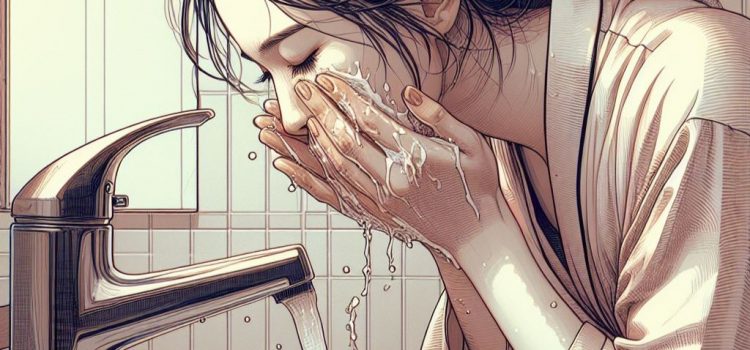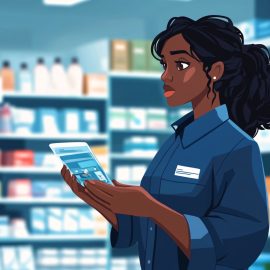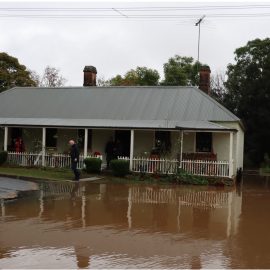
This is a free excerpt from one of Shortform’s Articles. We give you all the important information you need to know about current events and more.
Don't miss out on the whole story. Sign up for a free trial here .
Are your “clean” skincare products toxic? Why are cosmetics so under-regulated? Which ingredients should you avoid?
Nobody wants to use moisturizer or shampoo that will compromise their health. But many personal care products on your local drugstore’s shelves contain ingredients that experts say are unsafe—including some labeled “clean” and “non-toxic.”
Keep reading to learn which skincare ingredients you should avoid and which are actually clean.
It’s Getting Harder to Tell Which Products Are Safe
Experts have raised concerns that the personal care products we use every day—soap, shampoo, deodorant, skincare and hair products, and more—are formulated with potentially harmful chemicals.
Some people respond by choosing products that are marketed as “natural” or “clean,” which can make cosmetics and personal care products feel safer. But experts say these are unregulated marketing terms, and products labeled “natural” or “clean” aren’t necessarily less likely to contain harmful ingredients. Here’s how to find clean skincare products that won’t harm you.
Cosmetics Are Under-Regulated, and Use Many Questionable Ingredients
The Food and Drug Administration (FDA) has a relatively limited ability to regulate the safety of personal care products sold in the US. Most of the agency’s authority over cosmetics is defined by a law that dates to 1938. Even with the 2022 passage of a new law, the Modernization of Cosmetics Regulation Act (MoCRA), the FDA can’t require that products be independently tested for safety before manufacturers start selling them. The agency also can’t prevent manufacturers from using “forever chemicals,” which don’t break down in our bodies or in the environment and have been linked to negative health outcomes. Even though the FDA doesn’t ban them, it might be wise for people to limit their exposure to some questionable ingredients.
You can use databases like those from the (famously cautious) Environmental Working Group or the Non-Toxic Black Beauty Project to look up the ingredients of your favorite products and see which ones might pose risks.
Which Ingredients Should You Look Out For?
If you’re looking for a place to start, here’s a quick guide: Some scientists advise foregoing the preservative butylated hydroxyanisole, coal tar dyes like m-, o- and p-phenylenediamine, the emulsifier diethanolamine (DEA), formaldehyde and formaldehyde-releasers, fragrances, isobutane (and propane and other propellants), parabens, phthalates, polyethylene glycols (PEGs), the mineral talc, toluene, and the antimicrobial agents triclosan and triclocarban. Other scientists add cyclic silicones (siloxanes), ethanolamines, the sunscreen ingredients oxybenzone and octinoxate, homosalate, per- and poly-fluoroalkyl substances (PFAs) and perfluorochemicals (PFCs), hydroquinone, and aluminum to their list of ingredients to avoid.
You might also consider cutting unnecessary products from your skincare regimen or streamlining your hair care routine to embrace your natural texture and reduce the products you use. Or, you might be more strict about the ingredients of the products you use everyday and worry less about those that you use only occasionally.
“Clean Beauty” Products Don’t Necessarily Use Safer Ingredients
While MoCRA expands the FDA’s authority to regulate personal care products, it doesn’t change which ingredients manufacturers can use, and public health advocates have criticized the law for not going far enough. Some “clean beauty” advocates agree, noting that while the EU has banned more than 2,400 ingredients in cosmetics, the FDA has banned only 11. But observers say that the situation might not be as scary as it sounds: Manufacturers can’t use ingredients that make a product harmful when used as directed. Plus, the EU’s list includes things like jet fuel and pesticides, which weren’t ever used in cosmetics.
These conflicting messages illustrate how the “clean beauty” movement has made it more confusing for people to determine which ingredients are safe and which ones are harmful. Experts explain that claims of “clean beauty,” “natural” skincare, and “non-toxic” ingredients rely on terms that are unregulated and defined differently by every brand. Clean beauty advocates have been criticized for spreading misinformation and saying that clean products are “free from chemicals.” (Every ingredient, even water, is made of chemicals.) Scientists say that the level of exposure determines how much of a risk an ingredient poses, but that nuance is often missing from conversations about whether ingredients are safe.
In some cases, unscientific safety ratings and unfounded claims about ingredients have pressured brands to reformulate their products in ways that, instead of making them less harmful, compromise their stability or safety. But experts say it’s best if we use science, not fear, to make those decisions.

Want to fast-track your learning? With Shortform, you’ll gain insights you won't find anywhere else .
Here's what you’ll get when you sign up for Shortform :
- Complicated ideas explained in simple and concise ways
- Smart analysis that connects what you’re reading to other key concepts
- Writing with zero fluff because we know how important your time is






